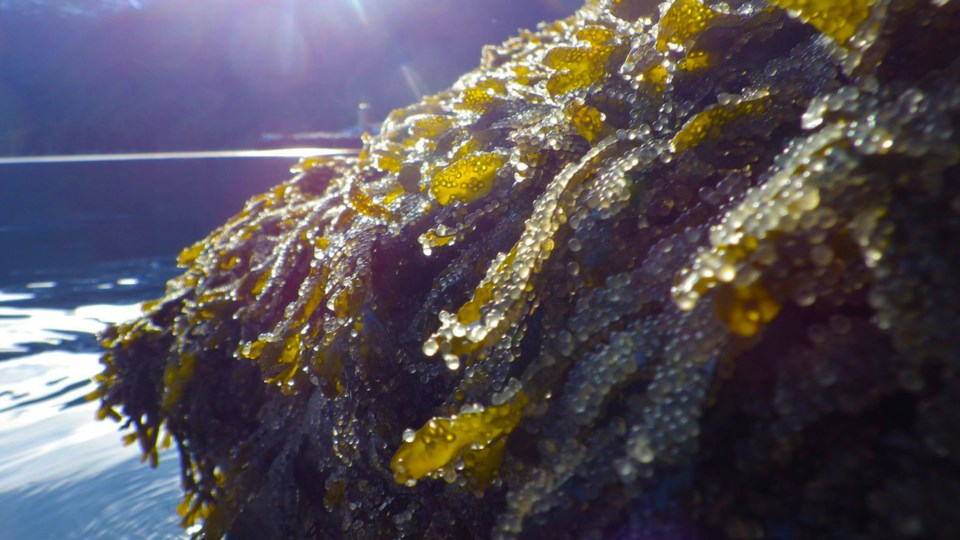A fisheries biologist says the proposed Woodfibre LNG export facility is a risk to herring in Howe Sound.
Stan Proboszcz, a biologist with Propeller Strategy, a non-profit marine advocacy group, says that herring and everything that eats them are at risk from the underwater intake system of the proposed facility.
According to Fisheries and Oceans Canada (DFO) guidelines, which Proboszcz describes as out of date, marine intake pipes should be located at least two kilometres from documented herring spawn areas.
Herring spawn were video-recorded by Squamish environmentalist John Buchanan within a two-kilometre radius of the proposed facility last month, according to a news release.
“The proposed Woodfibre LNG marine cooling system will put Howe Sound herring and everything that feeds on them at risk,” Proboszcz said in the release. “It’s unclear whether the proponents looked for herring spawn two kilometres in all directions from the proposed site, and at the appropriate time of year.”
Woodfibre LNG states in its Environmental Assessment application that there was no herring spawn within 3.5 kilometres across the channel from the proposed site and references DFO monitoring data, said Proboszcz.
It is unclear if herring spawn monitoring was done by DFO or Woodfibre LNG in recent years, according to the release.
According to Woodfibre LNG, the marine intake system is still being designed and divers have been in the waters of Howe Sound assessing the location of herring spawn at regular intervals.
“We definitely take on board the Department of Fisheries and Oceans guidelines and we look at their recommendations and understand their best practices, so he is not incorrect in what he is saying,” said Woodfibre LNG’s Nathan Gloag.
“We actually have detailed studies ongoing in the field… we have divers out there in the water at the moment.”
Gloag confirmed that since February, divers hired by Woodfibre have been in the waters of Howe Sound every two weeks to understand where and at what depth herring are spawning. “We can take that scientific evidence and incorporate it into our detailed design to make sure we have the best possible design and the least possible impacts from our seawater intake on herring spawn within the area,” he said.
Buchanan said he has been recording herring spawn for years.
“I have very solid field data I have gathered over the last four to five years that clearly shows the Woodfibre area is smack dab in the middle of Howe Sound herring spawn central,” Buchanan told The Squamish Chief. “The herring shift a bit to the south or to the north depending on the year, but… always centred on Woodfibre,” he said. “I believe this seawater-cooling tower is a clear threat to the herring larvae that hatch out and therefore a threat to the recovery of the Howe Sound eco system. A seawater-cooling system in the middle of the Howe Sound herring engine is just simply put, irresponsible and reckless.”




